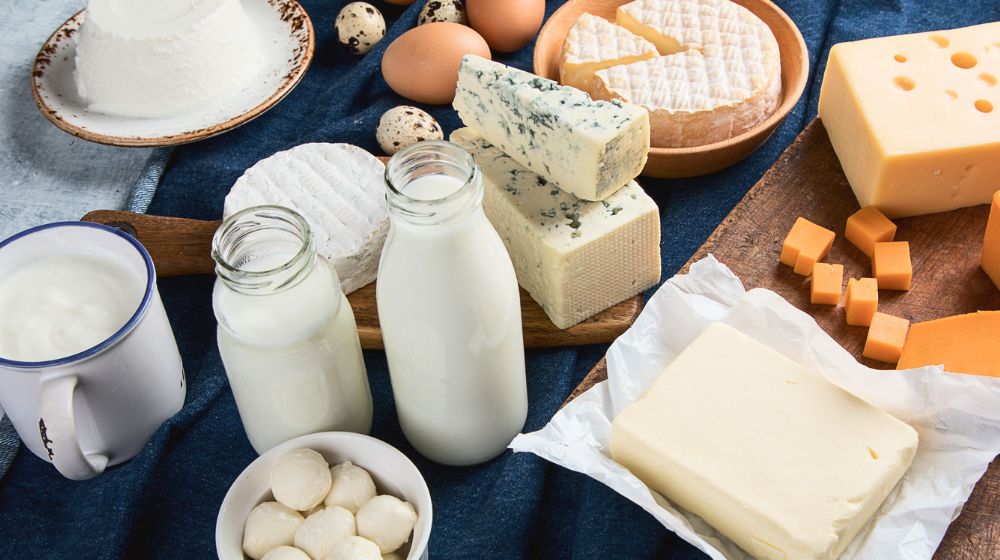


Written by Vivian Chen, Marketing & Communications Manager, EU SME Centre
Updated in September 2023
The growing demand of the Chinese consumers on imported dairy products provides many opportunities for European businesses. In 2015, the top three EU member states exporting dairy products to China by value were the Netherlands, Germany and Ireland.
However, getting dairy products such as milk, infant formula, cheese, yogurt and ice cream to China requires a good understanding of the complete process, including Chinese regulations, importing procedure, labelling requirements and tariffs.
The EU SME Centre’s 2023 report China’s Dairy Sector will clarify the market access rules for your company.
Dairy Products and Their Corresponding HS Codes
| HS CODE | PRODUCT |
|---|---|
| 04.01 | Milk and cream, not concentrated or containing added sugar or other sweetening products |
| 04.02 | Milk and cream, concentrated or containing added sugar or other sweetening products (milk powder) |
| 04.03.10 | Yogurt |
| 04.04.10 | Whey and modified whey, whether concentrated or not, or containing added sugar or other sweetening products |
| 04.05 | Butter and other fats and oils derived from milk; dairy spreads |
| 04.06 | Cheese and curd |
| 19.01.10 | Infant formula |
| 21.05 | Ice cream and other edible ice, either containing cocoa or nougat |
1. Check If You Can Export to China from Your Country Protocols
In January 2013, AQSIQ (Administration of Quality Supervision,Inspection and Quarantine in China) published Decree Nº152/2013, “Administrative Measure on Inspection, Quarantine and Supervision of Imports and Exports of Dairy Products”. This decree establishes the need for a signed protocol between the country of origin and China.
Health/Sanitary certificate
In addition to the protocol between the two countries, a health or sanitary certificate is required. This can take some time to be agreed and implemented – approximately six months from the protocol being signed.
Countries with a bilateral agreement and health certificate in place at the time of the announcement can continue as before. All other countries are required to sign a protocol and establish a health certificate.
For a list of EU countries and their status with regard to the bilateral agreement and health certificate, find it in the guide.
2. Register as a Manufacturer and Exporter with AQSIQ and CNCA As a foodstuff exporter
Since October 2012, by means of Notice 55/2012, both the exporter and importer are required to be registered for customs clearance. This is a very simple, free, and quick procedure (it should be completed within five days). However, it is important that it is done properly.
As a foreign food manufacturer
Following the spirit of the amended food safety law, GACC requires foreign producers to register on their online system since 1st October 2015. More instructions about the registration process are available in this guide.
Registration of Foreign Plants Producing Dairy Products for Export to China
Effective as of May 1st 2014, producers of dairy products seeking to export to China must be registered with AQSIQ prior to shipping any goods. This registration is mandatory for all dairy manufacturers of colostrum, raw milk, and dairy products.
2023 Update: in April 2021, the General Administration of Customs of the People’s Republic of China (GACC) issued the Administrative Provisions on Registration of Overseas Manufacturers of Imported Foods, which officially came into force on 1 January 2022.
The Provisions, commonly referred to as GACC Decree 248, stipulate that all overseas establishments that produce, process, or store any type of F&B product to be exported to China must register through a dedicated platform. They must obtain a registration code from GACC and display this code on the product’s inner and outer packaging – before exporting the product to China. Find the full GACC registration guide here.
3. Label Your Product Following Chinese Regulations
Evidence suggests that labelling is the most serious issue posed for most foodstuffs imported into China. There are many reasons for this, although an in-depth study of the labelling regulations can minimise problems with customs later on in the process.
All minimum units for retail must comply with Chinese labelling requirements in order to receive customs clearance. For the most part, these requirements are regulated by the standards detailed below. It is very important to read, understand, and comply with the full version of these standards. A summary of the standards is available in this guide.
2023 Update: all food products exported to China must display on their inner and outer packaging the registration code obtained from GACC. Find the full GACC registration guide here.
4. Prepare Documents Necessary for the Export-Import Process
After ensuring that your company and product comply with all the requirements for exporting to China, the next step is to document this compliance. A checklist of the documents required for the import-export process is contained in our guide. However, we recommend taking an in-depth look at the market access database (http://madb.europa.eu/) for clarification on each of these documents.
5. Get through Chinese Customs Inspection
Once the goods arrive at a Chinese port, Chinese authorities check the labelling and accompanying documents. If they comply with regulations, China Inspection and Quarantine (CIQ) will proceed with the quarantine test report check.
Products imported for the first time have their test report checked. After a successful “first import”, companies are added to the approved list for future imports. “First-time” imports are understood to designate those imports taking place under exactly the same conditions. Any changes to the port, importer, brand, formula, etc. lead to the operation being considered as a new import.
If a test is failed, the company must successfully go through five consecutive “first-time” import procedures in order to regain its previous approval status.
Chinese authorities can ask for specific tests of any import at their discretion, regardless of its track record.
There is a difference between products that have never been previously imported and those that have.
6. Pay Tariffs and Taxes
After the procedures listed above, let us now consider tariffs and taxes. The specific tariffs and taxes for each HS Code (in Chinese) may be consulted on the China Customs website.
7. Set Up Distribution Channels
Once the goods have been successfully declared at Chinese customs, the next step is to distribute them within the country. Usually, there is one importer for each geographical region (either a city and its area of influence or the whole country) who distributes products to retailers.
For more detailed instruction on each step, download the EU SME Centre’s guide Exporting Dairy Products to China.